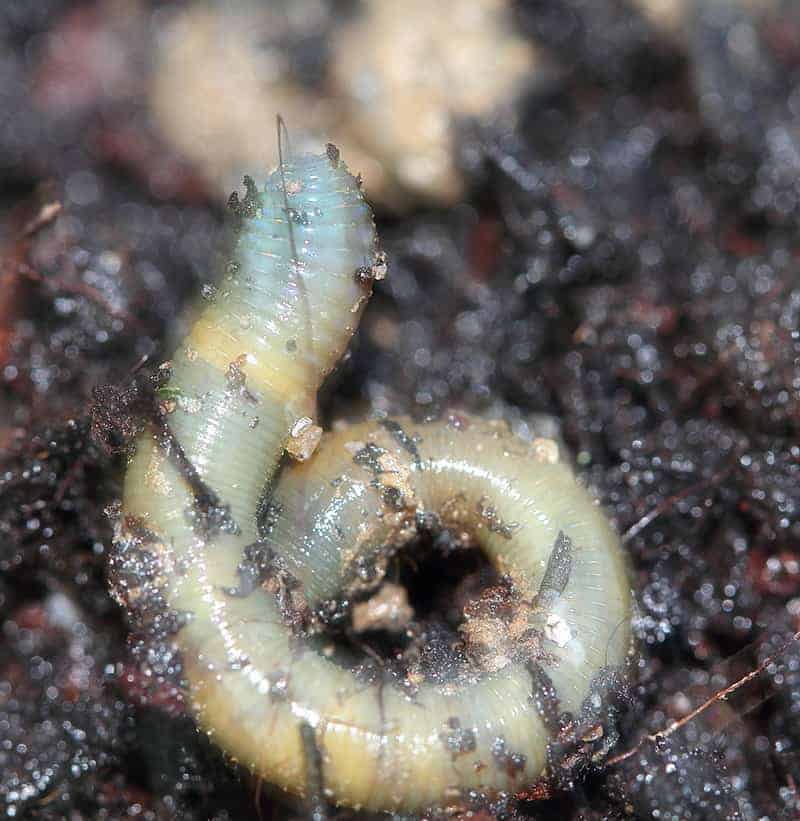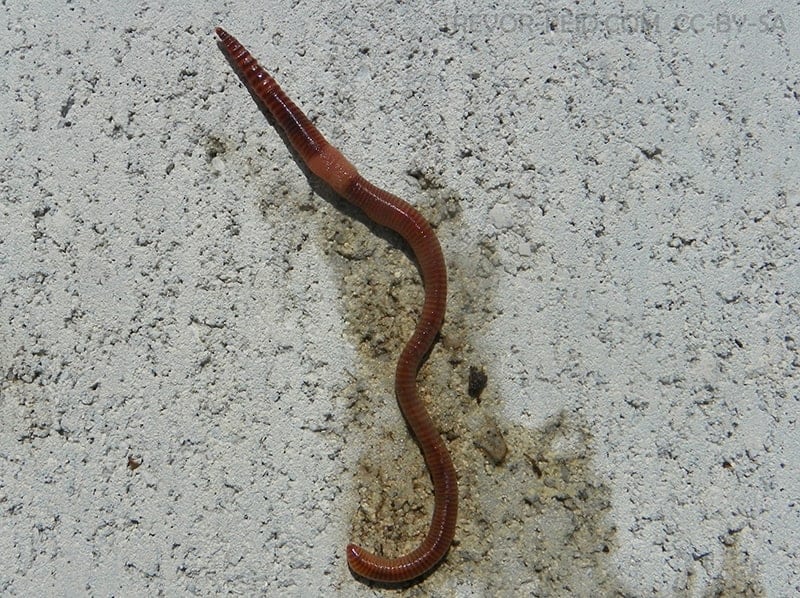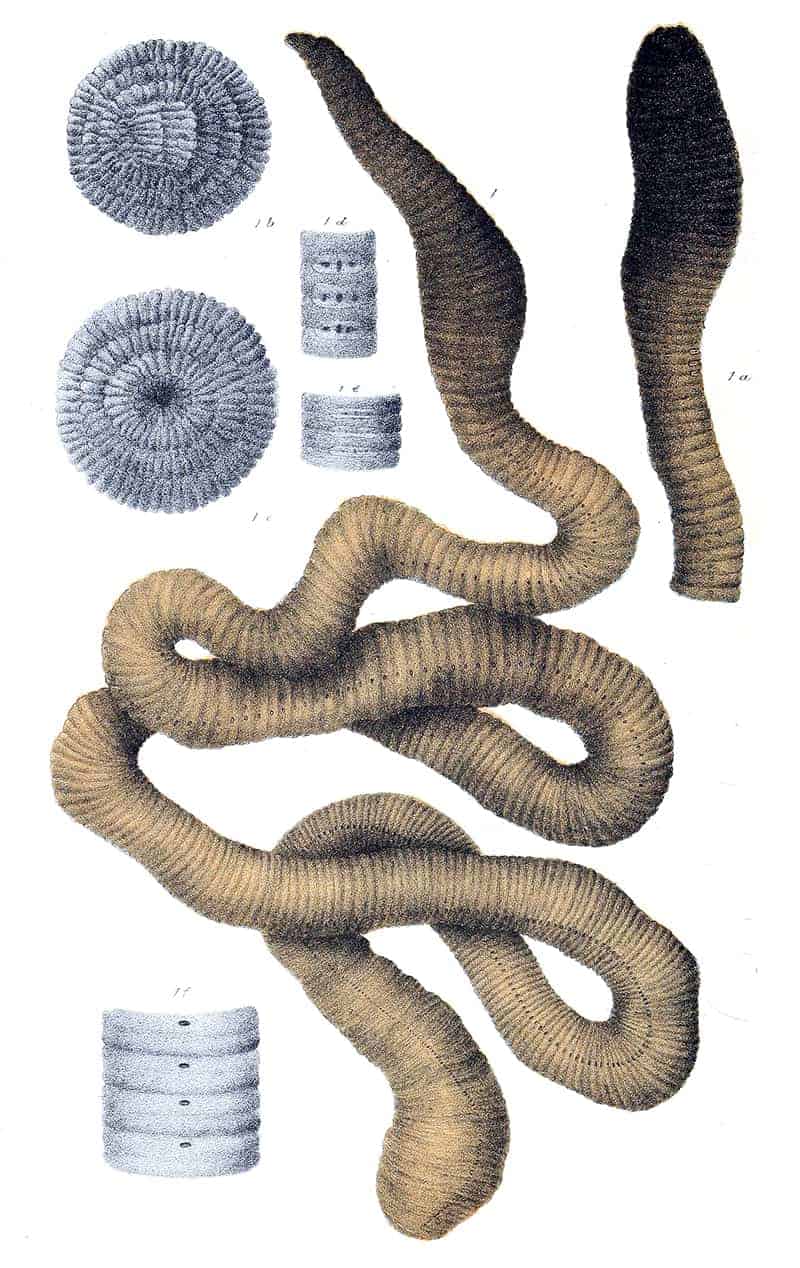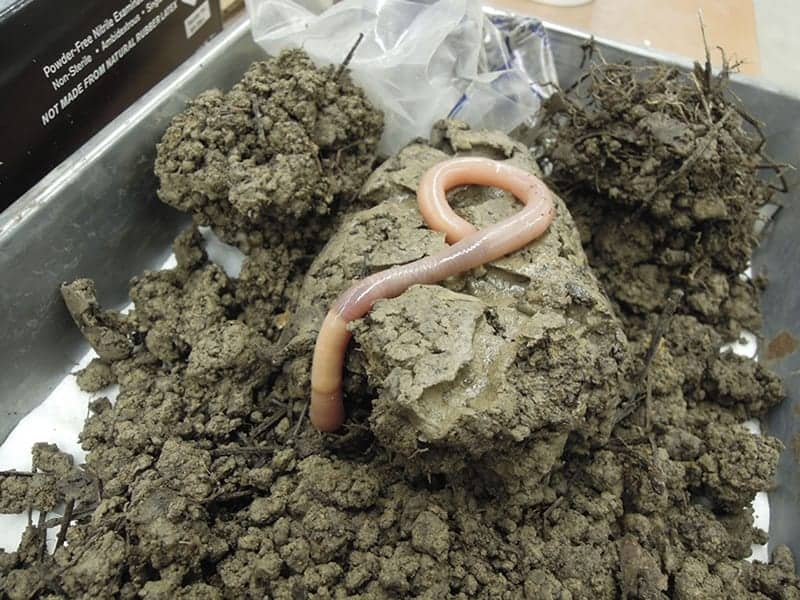Are you trying to decide which tree service you should use in your city? B... Read More
- Home >
- Different Types of Earthworms with Pictures & Facts
Different Types of Earthworms with Pictures & Facts
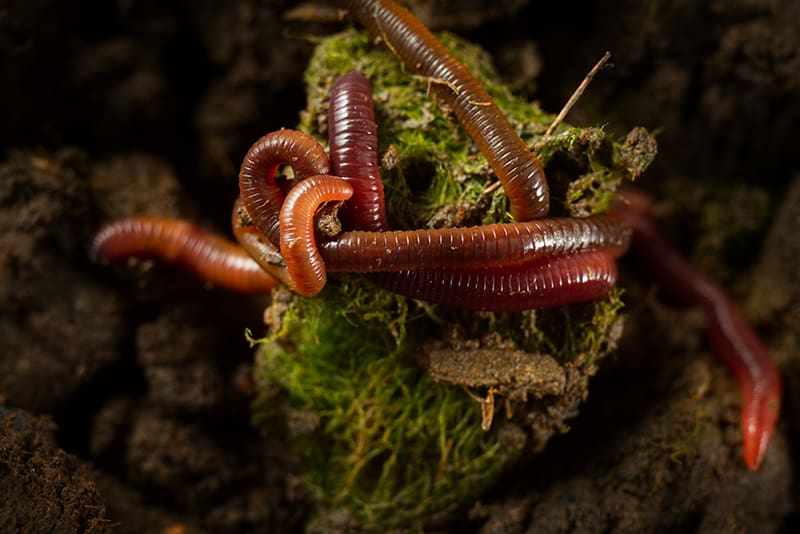
There are many types of worms, but those that we commonly encounter in our gardens are earthworms. These worms can be either beneficial or invasive, depending on whether they are native inhabitants of your area. To learn more about the importance of worms, and discover the different types of worms lurking underneath your soil, read on!
Benefits of Earthworms
Worms are not glamorous creatures that are especially loved by humans, but they play a vital role in our ecosystem, which, as humans, we directly benefit from. Charles Darwin was famously enthralled by earthworms, and stated: “It may be doubted whether there are many other animals that have played so important a part in the history of the world, as have these lowly organized creatures.” In fact, Darwin’s final publication in 1881 was a book about worms, entitled The Formation of Vegetable Mould Through the Action of Worms. At the time, it was a bestseller and even sold more copies upon the weeks following its initial release than On the Origin of Species for that Darwin is now more widely known. Some of the ways in that earthworms benefit our ecosystems are:
Improve soil nutrition
Earthworms feed on decomposing organic matter, such as leaves, dead plant roots, and manure. These nutrients become concentrated in the worm’s digestive system and released back into the soil in the excreted earthworms cast. These casts are rich in nutrients, notably nitrogen and phosphorus, and they are often left in the worm burrows. This means that burrows beneath the soil’s surface contain nutrients that are readily available to the roots of plants.
Some studies have shown that soil that has been digested and excreted by earthworms is five times richer in nitrogen than soil that has not been digested. The way some worms tunnel also helps to move fertilizer applications below soil where they can be utilized by the plants more effectively. It is also worth noting that worms do not feed on live plant roots, so they pose no threat to living plants.
Organic matter decomposition
Worms feed on decaying and rotting organic matter, and this process helps to break down the materials, enabling them to be fed on by bacteria and fungi. These micro life forms are important in helping compost to decompose, and they are also an important part of our ecosystem. Bacteria and fungi thrive on nutrients released by earthworms, and they themselves are an important food source for other creatures that inhabit the soil. A soil rich in worm casts is likely to have 1000 times more beneficial bacteria than soil that is not home to worms.
Improve soil structure
Earthworms improve soil structure by creating burrows and opening up spaces within the soil. This physical alteration means that water and soluble nutrients can travel more easily down to the plant roots. Research has shown that worm burrowing improves water filtration by up to ten times. For this reason, soil that is inhabited with worms is much less likely to experience flash flooding than that that is free of worms. The tunnels made by worms, which can go very deep into the soil, vastly improve drainage, which helps to protect plant roots against rotting. The burrows not only help with water drainage and filtration, but they also create airways that help with soil aeration. Good soil aeration is important to allow ventilation for plant roots and other living organisms that inhabit the soil.
Predators food source
While keeping worm populations alive is great for our soil and plants, we should also remember that worms are an important food source for many predators, such as birds. Without worm populations to feed on, some creatures, such as endangered land snails, would rapidly decline.
Types of Earthworms
There are three categories that earthworms fall into, and these can be defined by that part of the environment the worm predominantly inhabits. These three main types of earthworms are epigeic worms, which are also known as surface dwellers because they live above soil level, endogeic worms, which live below ground, and anecic worms, which live below soil level but explore at and above soil level to find sources of food.
It’s important to note and understand the differences that these types of worms have in order to recognize their differing roles within our ecosystem. For example, a worm that is good for composting will likely be an epigeic worm, as these worms feed voraciously and quickly excrete nutrients to help with the decomposition of compost. A well-intentioned gardener might move worms found in compost to their garden soil in an effort to improve soil quality, but as these worms do not burrow and will not happily live below soil level, they will be useless if placed amongst plants.
1. Epigeic earthworms
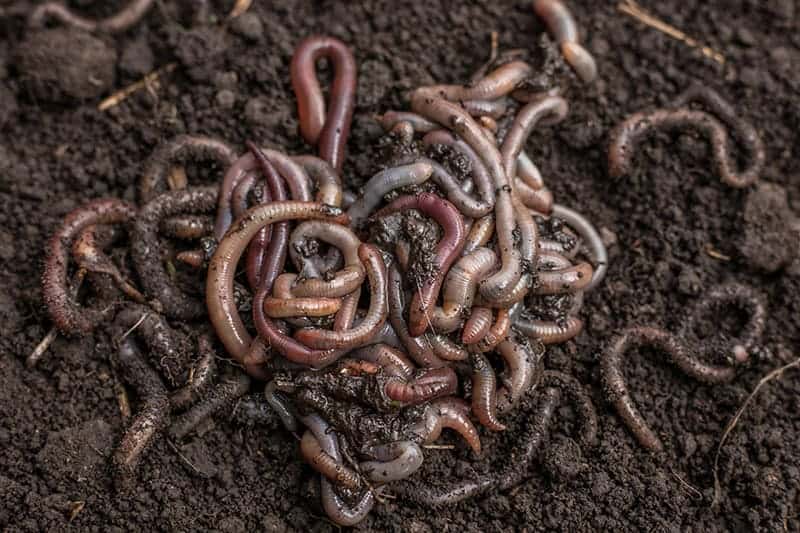
‘Epigeic’ is the Greek translation for ‘on the earth,’ because these worms do not build burrows, and instead reside amongst decaying organic matter on the soil surface. These are also sometimes called compost earthworms, or surface-dwelling earthworms, as they live on the surface of the soil amongst piles of leaves or compost heaps. They feed on decaying plant matter, leaf litter, and dung. They are weak burrowers, and therefore prefer to live amongst loose organic materials and topsoil.
They have a dark coloring that enables them to live above ground more safely, camouflaging themselves in piles of leaves or topsoil. Their dark pigmentation also helps to protect them from UV rays. They have strong muscles for their size, which enables them to move faster than other types of worms, which is important as living above ground they are most at risk from predators. These worms are important in composting and are known to rapidly consume and excrete composting material to help it break down more quickly. They are also able to reproduce very quickly, increasing the population of worms within the compost. They are small in size, usually ranging from between less than an inch up to seven inches in length.
2. Endogeic earthworms
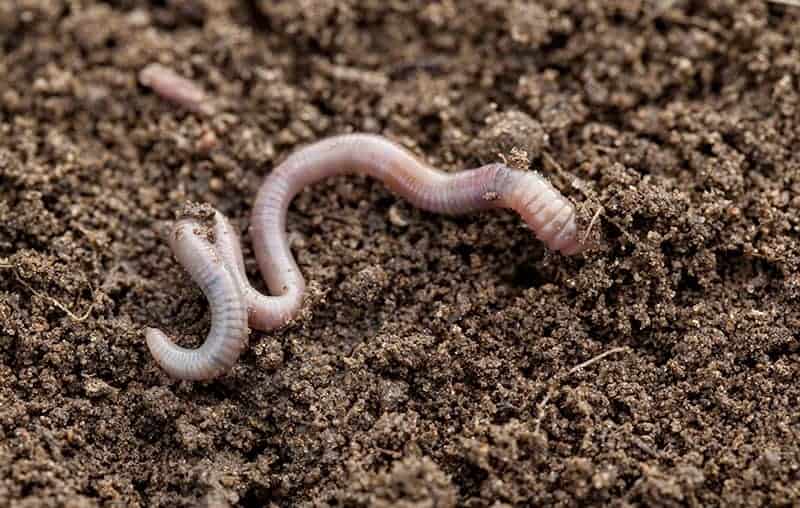
‘Endogeic’ translates from Greek to mean ‘within the earth,’ and accordingly, these worms burrow within the top layers of soil and rarely come up to the surface, preferring instead to literally live within the earth. They are most commonly found in the uppermost layers of soil where they create semi-permanent, horizontal burrows or under rocks and logs, though some will burrow deep into the soil. They typically only make an appearance on the ground surface in instances of heavy rain, as the extra moisture prevents them from drying out.
These worms are fairly small and generally measure between one and twelve inches. They tend to be very pale or translucent and colorless, and they have weaker muscles than epigeic worms, which means they move more slowly. They help to mix minerals and air within the soil and help with aeration as they eat the soil itself.
3. Anecic earthworms
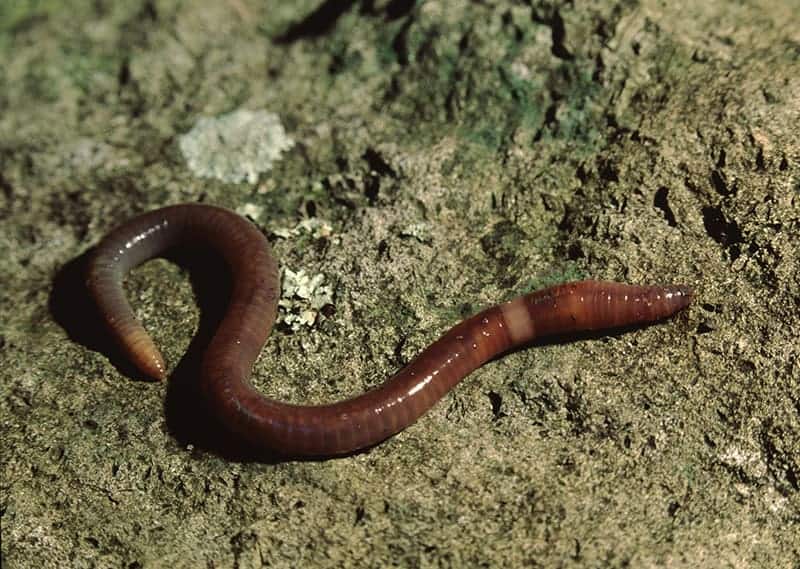
‘Anecic’ is greek for ‘out of the earth,’ because although these worms live below ground, they come up to soil level for their food. These worms are those that burrow vertically in the mineral layers of soil, creating permanent burrows as deep as six feet below surface level. Their burrow systems are quite extensive and can be as big as one inch in diameter. These worms collect food from above ground in the form of organic matter such as fallen leaves and drag them back underground to their burrows. They are also known to eat soil and some litter.
These worms encompass some of the most common types of earthworms, worms used for fishing bait, and nightcrawlers. They have very weak muscles and are the slowest moving of all types of worms, as they do not have any need to move quickly. They have some pigmentation but are often a milky color, especially native worms, as they predominantly reside underground. They can drastically range in size, anywhere from one inch to a huge sixty inches in length (University of Alberta).
Earthworm Species
There are known to be 27 species of earthworm in the United Kingdom, and 182 in North America. Of all of the earthworms known in North America, over 30 percent of them are introduced. This means they are not native species, and have found their way into the continent, usually by the importing and exporting of plants or sale of worms for fishing bait. The introduction of non-native worms is actually a huge problem, as these worms become invasive and can threaten the balance of natural ecosystems. Native worms, on the other hand, are enormously advantageous to our ecosystem and offer numerous benefits to our soils and plants.
1. Redhead Worm
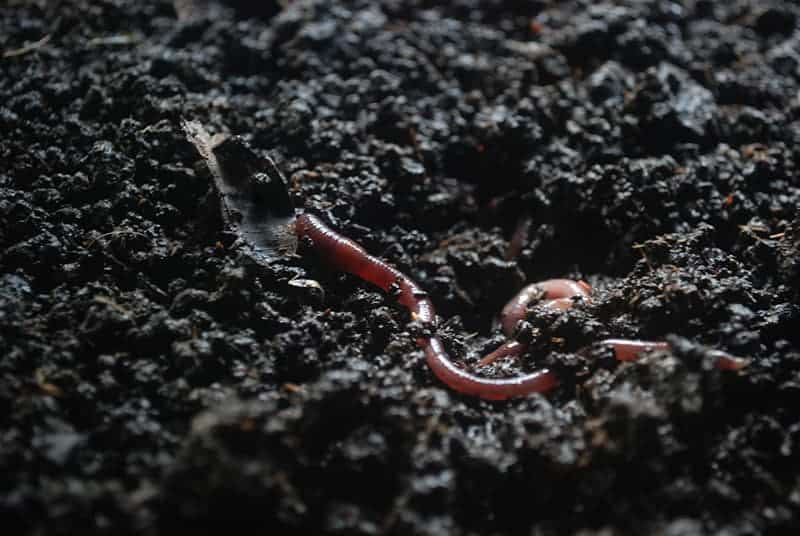
Scientific Name: Lumbricus rubellus
Family: Lumbricidae
This worm is native to Western Europe but has become widespread across North and South America, where it has become an invasive species. It’s voracious feeding habits, especially in areas without native earthworms, are causing enormous problems for ecosystems. The knock-on effect of the presence of these worms is a threat to some plant species and microbial communities. It is also becoming a problem in some parts of Europe where it originated from. It is known to live in the uppermost layers of soil or among piles of decaying leaves and is especially common in coniferous forests.
Visually, this worm has red-purple pigmentation at one end, hence the common name of ‘Redhead worm.’ It is medium-sized, measuring between four and five inches at maturity. It can be identified by the way it sometimes flattens its tail out to make the shape of a paddle.
2. Common Earthworm
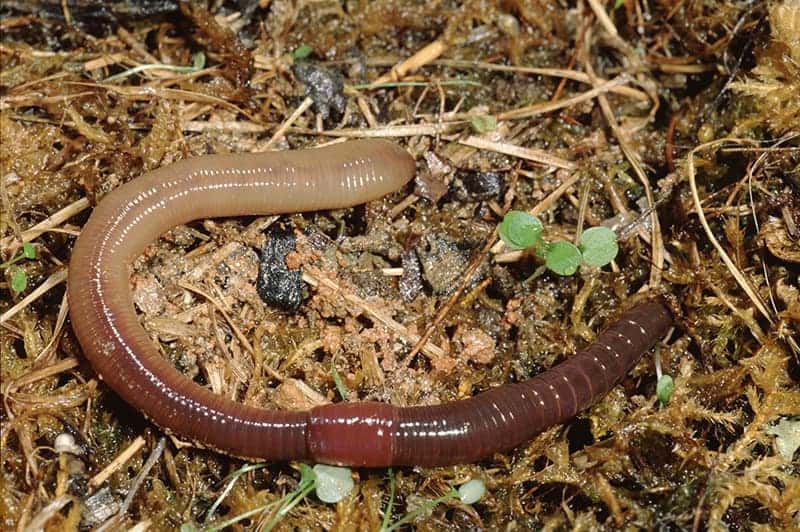
Scientific Name: Lumbricus terrestris
Family: Lumbricidae
Also known as the ‘dew worm,’ or ‘lob worm,’ this is a species of earthworm that is native to Western Europe, though as a result of transporting plants and worms for fish bait, this worm is now commonly found across North and South America, Asia, Africa, and Oceania. It is an invasive species, feeding on piles of leaves on the soil’s surface and the top layers of the soil itself. They have strong muscles that enable them to move quickly from known predators such as foxes, shrews, and birds. They are darker at one end, with a red-brown pigmentation. They can most often be seen during wet weather, and during dry seasons may burrow in the top layers of soil for protection from both heat and predators.
3. Green Worm
This endogeic worm is the most common type of earthworm found in the UK, accounting for 34% of all identified earthworms. The common name of ‘Green worm,’ comes from the fact that some of these worms possess bilin pigment, which gives them green coloring. However, most of these types of worms are pink morphs, so it is more likely that you will encounter a green worm that is actually pink. The truly green variations are more commonly found in grasslands, though scientists are unclear about why this disparity exists. The pink morphs have a slightly yellow colored ring near their top end, and if you look closely at the underside of the saddle, you may be able to see three discs that look like suckers. As adults, these worms typically measure around two inches long.
4. European Nightcrawler
This worm is also known as the ‘Greenhouse worm,’ or ‘Compost worm,’ thanks to the fact that it is gaining popularity as use in compost production, though it is most commonly used as a worm for fishing bait. When the worm has not fed, it takes on a pinkish hue, whereas when it has fed, it will be more blue-gray colored. They are heavily banded with lots of stripes and have tails that are paler than the rest of them. These worms are commonly found in moist or damp conditions, such as compost heaps, manure heaps, piles of decaying leaves or other organic garden matter, or bark.
5. Brandling Worm
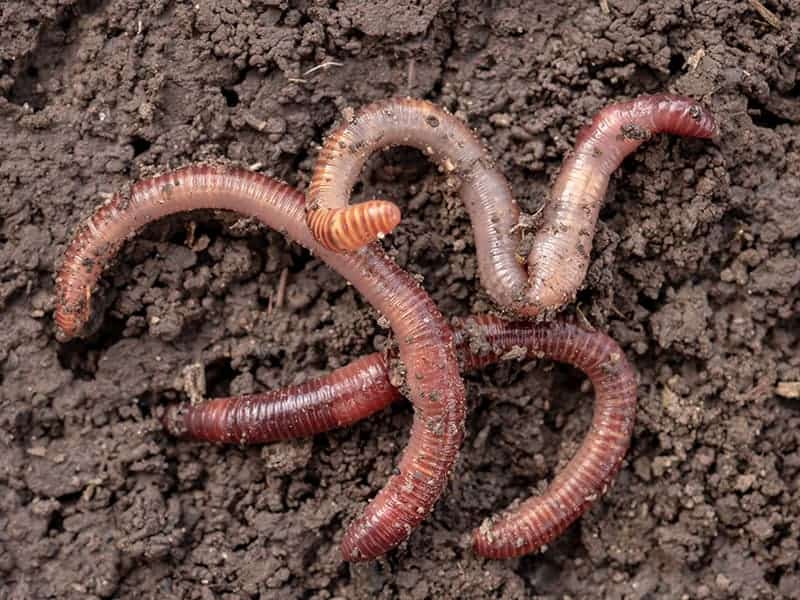
Scientific Name: Eisenia fetida
Family: Lumbricidae
These epigean worms are surface dwellers and are rarely seen in layers of soil. They live and feed on decaying vegetation, manure, and compost. Like other epigean worms, the brandling worm can move quite quickly, helping to keep it safe from predators. It has hair-like structures on each segment that are like bristles, and they can cling to surfaces to help push or pull the worm forwards or backward, giving it greater maneuverability. ‘Fetida’ translates roughly to ‘foul-smelling,’ which is a reference to that bad-smelling liquid the worm produces when it is handled. It is thought that this is to ward off predators.This worm is also commonly known as the ‘Tiger worm,’ or ‘Trout worm,’ and it is native to Europe though has been introduced to every continent on the globe with the exception of Antarctica.
6. Giant Gippsland Earthworm
This worm is native to Australia, and it is known to be one of the largest worms in the world at a typical length of between thirty and forty inches long. The front portion of the worm, including the head, is dark purple in color, while the remainder is pink-gray. It is typically found in deep soils that are moist, such as near riverbanks and streams. They make complex burrows at an average depth of around two feet, but they can burrow as deep as five feet within the soil. They feed on roots and other organic matter within the soil, but they do also sometimes pop their heads out of the soil surface in search of other food. This worm is known to have a declining population, which is threatened by soil cultivation and modern farming practices. The worm also has a low reproduction rate and slow growth, which is further hindering its ability to grow its population.
7. Kentucky Earthworm
Scientific Name: Komarekiona eatoni
Family: Komarekionidae
This species of worm is the only one belonging to the Komarekionidae family. It is native to the United States and is distributed across Pennsylvania, North Carolina, Tennessee, Indiana, and Illinois. It is considered a vulnerable species because of its widely dispersed distribution, and the fact that its natural environment is declining. It is under threat from soil disturbance, as well as other exotic worms that have been introduced.
8. Oregon Giant Earthworm
Scientific Name: Driloleirus macelfreshi
Family: Megascolecidae
This is a rare species of worm that is known to be one of the largest in North America, at an average length of over three feet. The first example of this worm was described near Salem, Oregon, in 1903, and it has since been sighted in just fifteen locations around Oregon. The last known sighting of this worm was in 2008. The genus name of ‘Driloleirus’ translates to ‘lily-like worm,’ which is a reference to the scent the worm emits when it is handled, which is said to be reminiscent of flowers. They are known to burrow deep into the soil at depths of around fifteen feet. They prefer moist, organic soil, and spend much of their time in their burrows, but will emerge at soil level during times of heavy rain. These worms predominantly occupy the soil below forests and are thought to be tolerant of acidic soil in that fir trees grow.
9. Louisiana Mud Worm
Scientific Name: Lutodrilus multivesiculatus
Family: Lutodrilidae
This is the only species of worm in the Lutodrilidae family. It is semi-aquatic, living in swamps and mudflats in its native region of Louisiana. This worm has very limited distribution and has not been found outside of its native state. It is considered to be a rare species.
10. Washington Giant Earthworm
This rare worm was first discovered near Washington in 1897 but was thought to be extinct by the 1980s because there had not been any sightings of the species in a considerable amount of time. However, two specimens were discovered in 2010, and the worm is now considered to have vulnerable conservation status, despite environmental organizations petitioning for it to be acknowledged as an endangered species. The worm is known to burrow at depths of around fifteen feet, going to its deepest level during summer to avoid drought. It is thought that this worm can grow to in excess of three feet; however, modern discoveries of the worm have found them to be around half this expected length. It does not have any pigmentation and can appear to be white, pale pink, or translucent.
11. Gray Worm
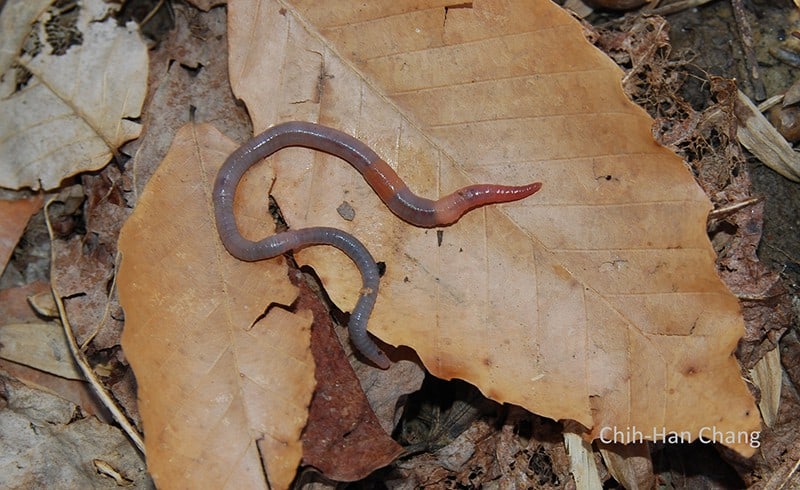
Credit to Smithsonian Environmental Research Center
Scientific Name: Aporrectodea calignosa
Family: Lumbricidae
This worm is commonly found in the United Kingdom, where it lives in the top layers of soil in non-permanent burrows. It typically measures between two and three inches long and can be identified by its distinctive coloring. At its front end, the worm is banded into three segments, which are pink, gray, and brown.
12. African Nightcrawler
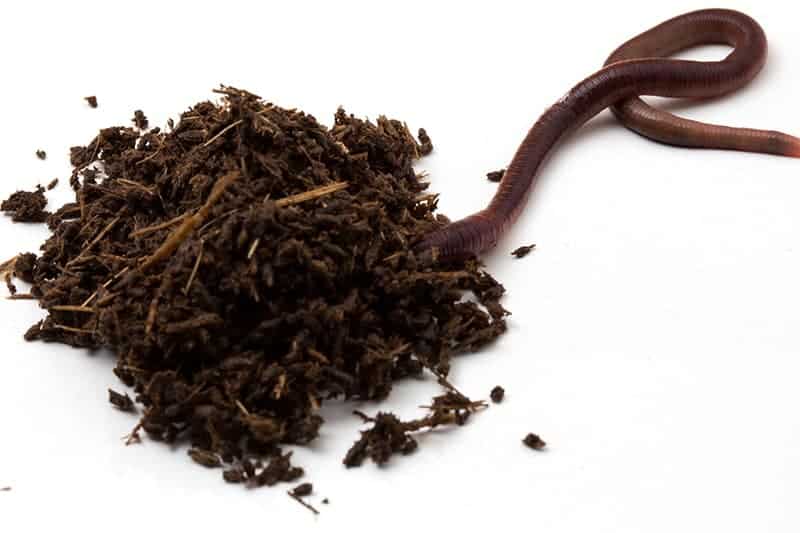
Scientific Name: Eudrilus eugeniae
Family: Eudrilidae
This worm is native to West Africa but has become widespread across tropical and warm regions where temperatures regularly sit between 75 and 85 °F. This worm is easy to identify as it is dark purple all over and has a glossy shine. Its rear end is tapered to a thin point. This worm is known for its excellent ability to rapidly progress the decomposition process of composting material.
13. Composting Worm
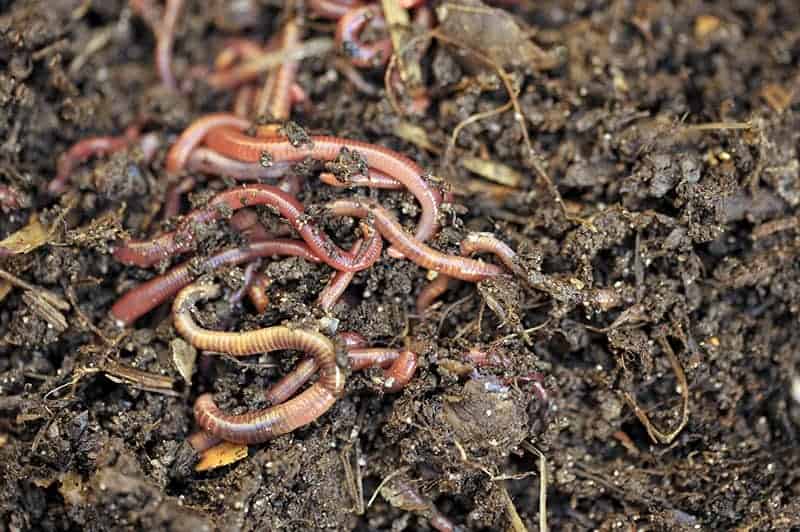
Scientific Name: Perionyx excavatus
Family: Megascolecidae
This is a tropical worm that is thought to have originated in the Himalayan mountains. This worm is now commercially produced on a mass scale for use in composting. It is known for its ability to quickly produce worm castings, which are beneficial in the speedy decomposition of compost, and it has recently gained popularity in the North American market as the popularity of home composting has gained momentum and become more widespread. It thrives in moist conditions.
Sources
CABI, Invasive Species Compendium
Global Invasive Species Database,Invasive Species Specialist Group
Australian Government-Department of Agriculture, Water, and the Environment
Related Content
-
Tree Services
-
Miracle Gro Aerogarden Reviews
When AeroGrow Inc. released the first model of the AeroGarden way back in ... Read More
-
Despite environmental concerns, 3 in 5 Gen Zers buying roses for partners this Valentine’s Day
According to a 2021 global study, 59% of young adults ages 16-25 are very ... Read More
-
Fogponics – How to Grow with Fog
If you are no strangers to Hydroponics, you must have known that Hydroponi... Read More
